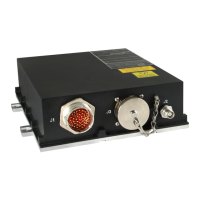INSTALLATION MANUAL
CMA-5024 GLSSU
This document includes Proprietary Information and shall not be reproduced or communicated to third party
without prior written permission by CMC Electronics Inc.
Page 208
November 21, 2008
C. RF interference Tests
Apply GPU or APU power to the aircraft. Power-up all GLSSUs. Activate all the other aircraft systems
– including engines and radios. The test below must be performed for each GLSSU:
Key one-by-one the radio transmitters for at least 30 seconds at each of the recommended test
frequencies tabulated below. Use the procedure in paragraph A above for detecting interference
effects. Record the observations.
EQUIPMENT TEST RF
TRANSMISSION
FREQUENCY
CONDITION Observation/effects
VHF radios
(Channel spacing
= 25 KHz and
8.33 KHz)
121.150
121.175
121.200
131.250
131.275
131.300 MHz
VHF radios
(Channel spacing
= 8.33 KHz)
121.185
130.285
121.190
131.290 MHz
Use CW or AM signals.
For SSB signals, apply
voice or tone modulation
in order to obtain a
strong RF signal output.
SATCOM 1626.5 to 1660.5 MHz
Both 1629.42 and
1647.42 MHz
simultaneously
Test multi-channel
modes if this mode is
supported.
Worst-case: 7
th
order
intermodulation product
falls at 1.57542 GHz.
Use two channels close
to these frequencies.
GLOBALSTAR Any,
1610 to 1625 MHz
HF radios Any
Use CW or AM signals.
For SSB signals, apply
voice or tone modulation
in order to obtain a
strong RF signal output
The document reference is online, please check the correspondence between the online documentation and the printed version.

